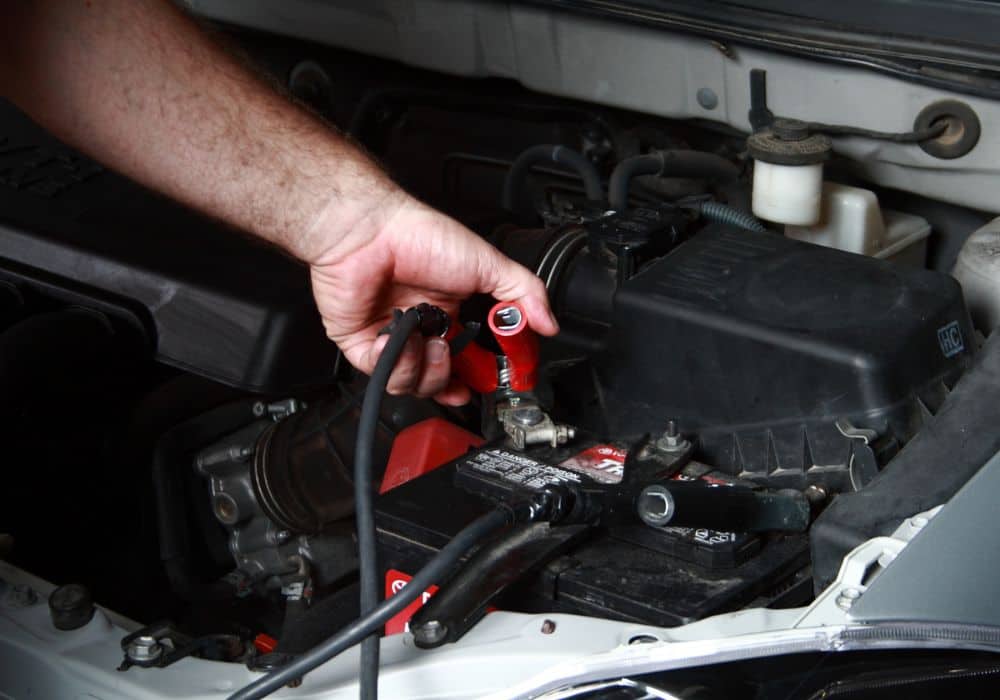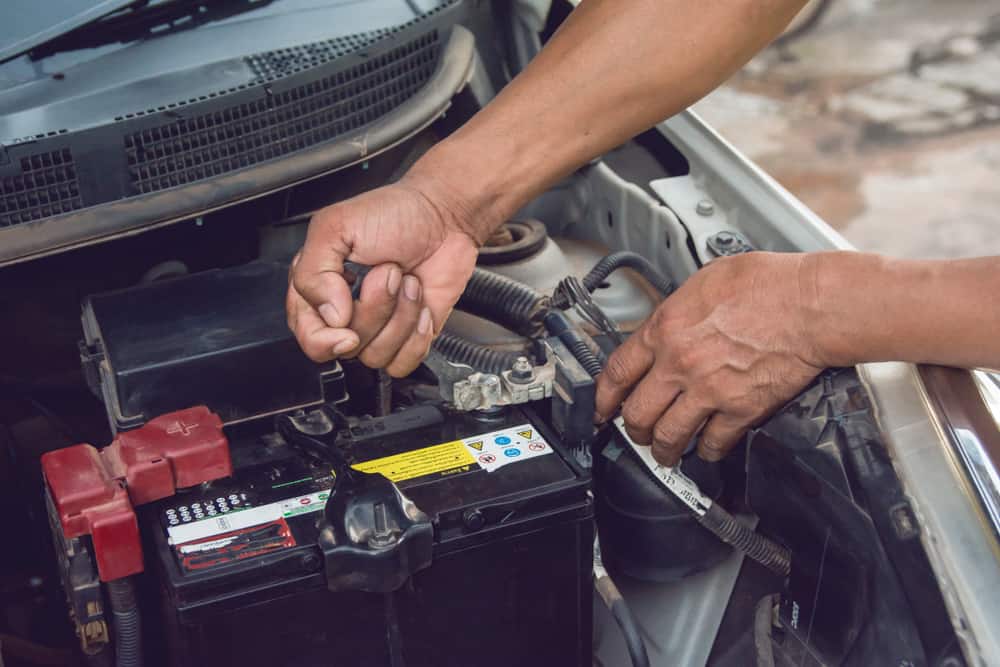Your car battery must have enough stored energy to power devices while the car is off and start the vehicle. A car battery that cannot hold a charge or that is not receiving a charge while in use doesn’t have the power to start the vehicle or run other components.
Your computer and fuel pump must get power from the main relay, and your spark plugs can only get their initial start from your car battery.After this, the serpentine belt (also known as your drive belt) rotates. This does a lot for other functions of your car, but it also generates mechanical energy that your alternator converts into electrical energy to charge your battery.
Issues in any of these areas may affect your car’s charging system, and there are external issues that can interfere with your battery as well. When you notice an issue with your charging system, you should diagnose and address the issue as soon as possible.
Table of Contents
Dead Car Battery vs. Car Battery Not Holding a Charge
There is a big difference between a dead car battery and one that isn’t holding a charge, and this can help you figure out your issue in a more timely fashion.
A good battery will still die if there is an issue with the charging system. If this is the case, you’ll usually notice other symptoms such as:
- Dimming headlights or interior light
- Electrical issues with your accessories
- Battery not holding a charge only when used (otherwise holds charge at rest)
An obvious sign that your battery isn’t the issue is what happens after a jump-start. If you do this properly, you should have enough charge to at least drive off and get where you need to go.
If your car dies as soon as you disconnect the jumper cables or charger, it usually indicates an issue with your charging system. You may still need a battery replacement, but there are other repairs to consider.
What to Consider When Car Battery Isn’t Holding a Charge
When your car battery isn’t holding a charge, the most common reasons include:
- Battery condition
- Battery connections
- Parasitic drain
- Alternator
- Voltage Regulator
- Drive belt/ tensioner
These are the most common problems that interfere with your battery and charging system, and they’re usually easy to diagnose and repair on your own.
1. Car Battery Condition
Check into the condition of your car battery before you run out and start buying things.
The first thing to consider is how old your battery is. Look for a sticker on your battery chassis that lists the month and year of manufacturing.
Most battery manufacturers recommend that you replace your car battery after 3 to 5 years. Battery performance degrades over time, and older batteries don’t have the capacity or ability to hold a charge in the same way.
If your battery is still young, make sure the battery is free of obvious signs of damage or malfunction. This includes:
- Cracks
- Dents
- Bulges
If you have a multimeter or a voltmeter, now is a good time to check the charge of your car battery. Car battery voltage can be anywhere from 12.6 (when not in use) to 14.4 volts while the engine is running.
A lower resting voltage tells you the battery is not completely charged. If it doesn’t rise while the engine runs, there may be an issue with your charging system.
If you can get your car battery to a dealership, mechanic, or auto parts store, they can run a load test on your battery. A load tester runs a more comprehensive test by checking how well your battery handles a load (instead of checking voltage only).
2. Battery Connections

Make sure there is no corrosion on your battery terminals or cables. It’s not uncommon for corrosion to occur over time, but you shouldn’t let it build up enough to interfere with or wear through your connections.
Your battery cables should connect firmly to your battery. Look for frays or creases in your wires, and replace any damaged parts that you notice.
Even dirt, debris, and grime will interfere with charging. Make sure you check your battery regularly and keep it clean.
3. Parasitic Drain and/or Blown Fuse
A parasitic drain is anything drawing from the battery when it should not be (usually when your vehicle is off). Modern car batteries supply power to certain components that must retain memory, such as your clock or your alarm system.
Faulty electrical components or a defective fuse can cause this issue. Use a multimeter to check for a parasitic draw on your car battery and check your fuse condition to deal with this problem.
If this is the problem, you should not have any charging issues after replacing or repairing the faulty component.
4. Charging Component Issues
If you know your battery is in good health, it’s time to take a look at the different parts of your charging system.
Alternator
Your alternator charges the car while you drive by converting mechanical energy to electrical energy your battery can use. These last about 7 years before they need replacement, but the actual schedule varies depending on vehicle usage.
Dimming lights or intermittent power usually hint at a failing alternator. To fix this problem. You can test your alternator using a multimeter to verify this issue.
Voltage Regulator

Your voltage regulator is what sets the voltage rate to make sure your battery gets exactly what it needs to charge, no more and no less. An issue with your voltage regulator may lead to insufficient charging as well as overcharging that kills your battery.
If this is the problem, it’s important to test other parts of your electrical system to ensure there is no subsequent damage.
Drive Belt and Tensioner
Your drive belt, also known as a serpentine belt or alternator belt, will interfere with charging as it wears out. The same is true for the tensioner pulled that turns it.
A loose or worn belt will not turn properly to generate charging power for your battery, leading to an insufficient charge and, eventually, a dead battery.
The issue is usually your belt, but the tensioner may fail over time. Replace these parts as needed.
Conclusion
A car battery that will not hold a charge doesn’t necessarily mean you need a new battery, and it’s important to consider every option before making your repairs. Problems range from simple swaps to more intensive repairs, but remember to:
- Check battery and cable conditions first
- Allow your battery ample time to charge before using your vehicle
- Park your car until any electrical issues are resolved.
The issue is common enough you can find plenty of resources online, but you shouldn’t make electrical repairs you’re uncomfortable with.
Is your car battery not holding a charge? Let us know what other issues you’re having, and we’ll help you find a solution.
